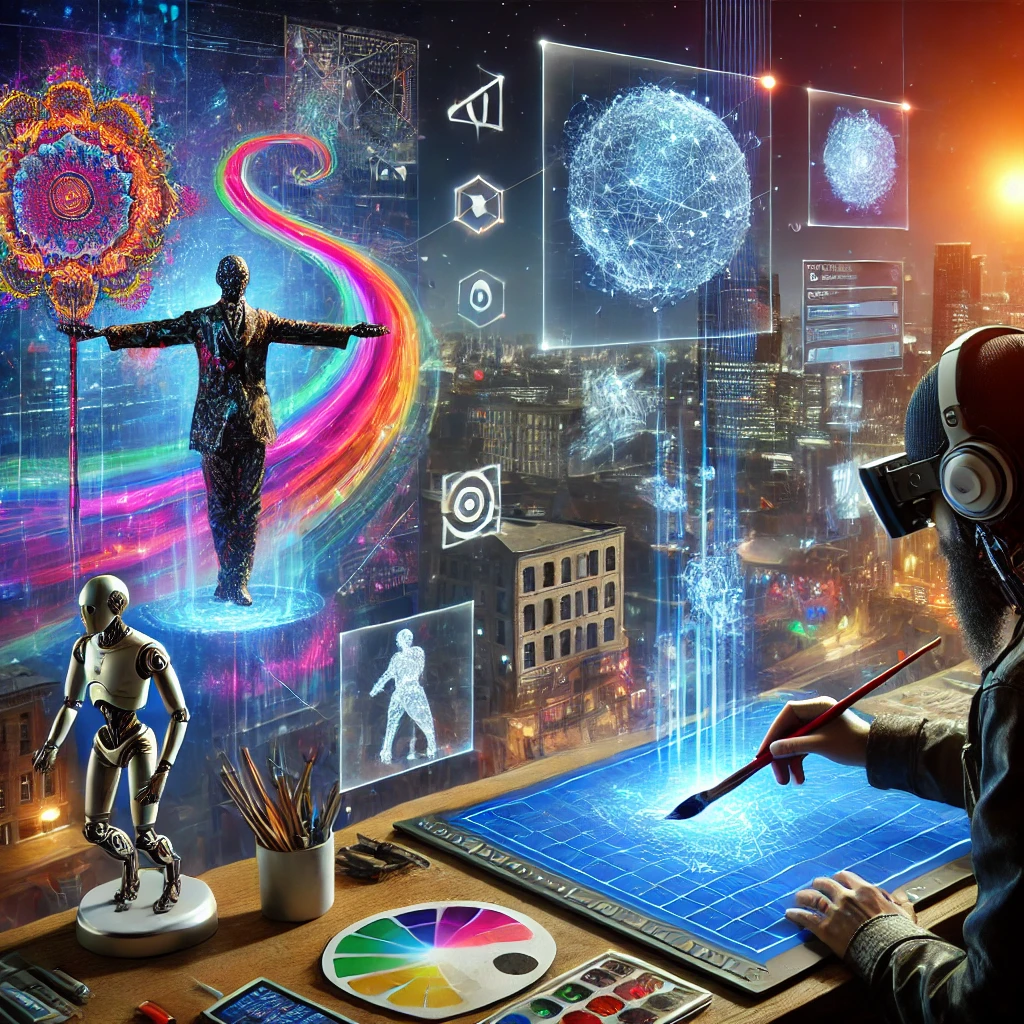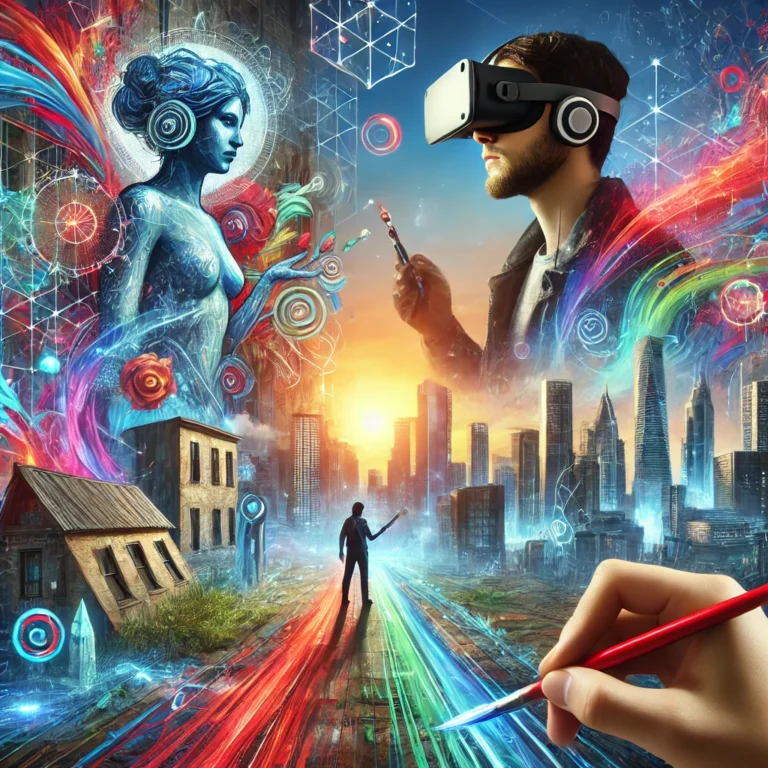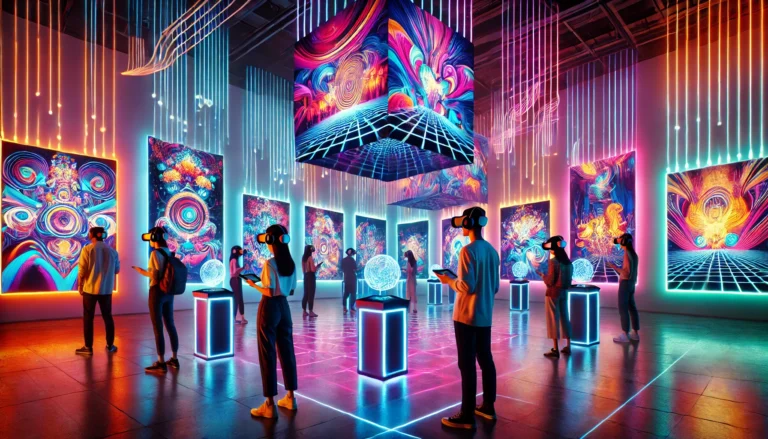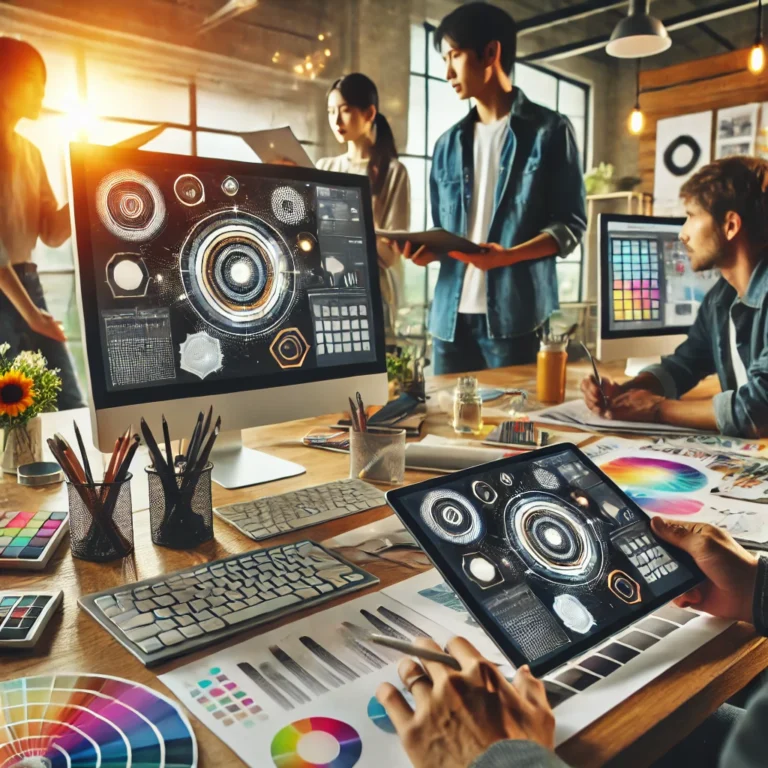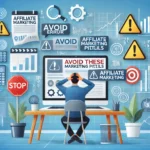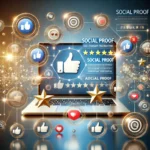Imagine stepping into a world where creativity meets cutting-edge technology—a realm where art is born from pixels, code, and boundless innovation. I still remember the first time I encountered a digital art installation that transformed an ordinary gallery into a dynamic, interactive universe. It was as if the walls came alive, and every brushstroke of light told a story. As a creative strategist in art and technology, I have seen digital art evolve from simple experiments to a vibrant movement that inspires professionals and enthusiasts.
In today’s fast-paced era, young creatives and professionals are constantly seeking new forms of expression that match their dynamic lifestyles. Digital art challenges traditional boundaries and offers a platform for both self-expression and career innovation. Whether you’re an emerging artist or a seasoned professional, this fusion of technology and art holds the promise of a future where every digital creation becomes a masterpiece waiting to be discovered. For a deeper look into the fundamentals of digital art, check out Adobe Creative Cloud – Digital Art (https://www.adobe.com/creativecloud/design/discover/digital-art.html).
Key Point 1: The Evolution of Digital Art
Digital art’s journey is like a thrilling roller coaster with unexpected twists that have continuously redefined what art can be. In the early days, computer screens displayed only basic grids of pixels. Nevertheless, pioneers experimented with digital designs that laid the foundation for today’s vibrant art scene.
A Glimpse Into the Past
Think back to the era of 8-bit graphics—a time when digital art was driven by innovation rather than perfection. Early computer-generated images resembled the first sketches of a budding artist: full of promise and raw energy. As technology advanced, these experiments evolved into sophisticated digital canvases. In many ways, this evolution is like a caterpillar transforming into a vibrant butterfly. Today, digital art ranges from intricate graphic designs to immersive interactive installations.
If you’re curious about the history of digital art, visit The Art Story – Digital Art (https://www.theartstory.org/definition/digital-art/) for valuable insights.
Pioneering Artists & Milestones
Over the decades, visionary artists have pushed the envelope by merging technology with traditional artistry. Moreover, their work has reimagined how we experience art. For instance, I recall a moment at a digital art symposium when a renowned artist described each pixel as a modern brushstroke—a clever twist on classic painting techniques. Such milestones remind us that digital art is not just a trend; it is an evolving narrative reflecting our society’s shift toward a tech-driven world.
For further exploration of digital art milestones, explore Adobe Create Magazine (https://create.adobe.com/).
Key Point 2: Emerging Technologies Transforming Art
Imagine donning a VR headset and being transported into an alternate universe—a space where art surrounds you in every direction. I vividly recall my first encounter with an augmented reality (AR) installation. It felt as though I had stepped into a living painting where digital light narrated an immersive story. This experience lies at the heart of how emerging technologies are reshaping art.
Augmented & Virtual Reality: Blurring the Lines
AR acts like a magic lens that overlays digital elements onto our everyday world. For example, it can turn a city street into an open-air gallery where murals come alive with a tap on your smartphone. In contrast, VR creates entire worlds from scratch. I once became so engrossed in a VR exhibit that I lost track of time. Furthermore, these technologies encourage us not only to view art but also to step inside and interact with it.
To learn more about the impact of VR on digital art, check out Road to VR (https://www.roadtovr.com/).
Artificial Intelligence: The New Muse
Artificial Intelligence (AI) is emerging as a revolutionary creative tool. Imagine collaborating with a machine that learns your artistic style and suggests creative twists. I once worked with a digital artist who called AI a “modern muse.” This innovative partner pushed creative boundaries by whispering unexpected ideas.
For more insights on AI’s role in artistic creation, visit AIArtists.org (https://aiartists.org/).
Blockchain & NFTs: Redefining Ownership
Blockchain and Non-Fungible Tokens (NFTs) have revolutionized the art market by redefining digital ownership. Picture an art collector verifying the authenticity of a masterpiece with just a few clicks. I once spoke with an NFT creator who described blockchain as a “digital vault” that safeguards artistic treasures.
Additionally, NFTs allow artists to monetize their work in novel ways, opening a global marketplace where each digital piece carries a unique signature. For a clearer understanding of how NFTs work, see Christie’s NFT Guide (https://www.christies.com/features/What-is-an-NFT-10510-7.aspx).
Key Point 3: Social Media & Digital Platforms in Art Marketing
Imagine scrolling through your social media feed and stopping at a digital art piece that captivates you—a mesmerizing blend of color, motion, and innovation. As a creative strategist, I have seen art once confined to galleries now thrive on digital canvases that reach millions.
The New Age of Artistic Exposure
Social media now serves as a modern gallery where artists and designers display their work globally. Furthermore, this digital revolution blurs the lines between art creation and marketing.
- Storytelling in Motion:
For instance, an artist might use Instagram’s carousel feature to reveal a piece’s journey from initial sketches to final polish. Each swipe is like turning a page in a visual diary. I recall a young designer who transformed her creative process into a series of posts, turning casual viewers into loyal followers. - Engagement Beyond Likes:
Platforms such as TikTok, Instagram, and Pinterest allow artists to share behind-the-scenes glimpses, interactive tutorials, and live Q&A sessions, fostering vibrant communities.
For practical tips on leveraging social media for art marketing, check out Tailwind’s Instagram for Artists (https://www.tailwindapp.com/blog/instagram-for-artists/).
Leveraging Digital Platforms for Marketing Success
Digital tools enable artists to showcase and monetize their work. In addition, affiliate marketing strategies can boost these efforts by connecting creators with brands that resonate with their audience.
- Creating Authentic Connections:
Every post or video offers an opportunity to build trust and authenticity. For example, a designer might partner with a tech company to feature innovative tools during the creative process, integrating affiliate links seamlessly into engaging content. - Interactive Marketing Techniques:
Consider hosting live virtual tours of a digital studio, where viewers can ask questions in real time or vote on upcoming projects. Such interactive experiences humanize the brand and provide valuable audience insights.
For further insights on hosting effective live sessions, visit ON24’s Digital Events Strategy (https://www.on24.com/customer-stories/how-thermo-fisher-scaled-a-digital-events-strategy-using-on24-and-ai/).
Conclusion: Summary & Call to Action
Summary
In conclusion, technology and creativity are in a passionate dance. From humble beginnings with pixelated images to immersive AR and VR experiences, digital art continuously reinvents itself. This journey is not merely about technological progress—it is about embracing curiosity and limitless possibilities.
I vividly remember a digital art installation that transformed my view of creativity. It was more than an exhibit; it was an invitation to reimagine art. Today, as you navigate this vibrant landscape, consider how you might harness these innovations to express your unique story.
Call to Action
Let this be a call to action. Dive deeper, experiment boldly, and let technology serve as the brush that paints your next masterpiece. The future of art is in your hands, and every digital innovation adds a new color to your creative palette. For additional inspiration on blending traditional and digital art, explore MoMA’s Online Collection (https://www.moma.org/collection/).
Audience Engagement
Engaging with art is an interactive, conversational experience. Consider these strategies to foster a dynamic community:
- Interactive Polls & Quizzes:
Invite your audience to participate in live polls or quizzes—for instance, asking “Which digital art innovation resonates most with you—AR, VR, or AI-driven art?” This approach sparks curiosity and builds community. - Live Q&A Sessions & Webinars:
Host regular sessions where digital artists and tech experts share insights and answer questions in real time. Such virtual roundtables can reveal the challenges and triumphs of merging art with technology. - Story Sharing & User-Generated Content:
Encourage readers to share their digital art or experiences. Creating a dedicated hashtag and featuring selected works on your website or social channels can turn passive readers into passionate contributors. - Behind-the-Scenes Content:
Provide exclusive glimpses into your creative process with short video diaries or interactive photo stories. These behind-the-scenes moments humanize your brand and invite audience participation. - Discussion Forums & Comment Sections:
Integrate forums or lively comment sections into your posts. Questions like “What digital art trend excites you the most?” inspire dialogue and deeper connections among your readers.
By weaving these interactive elements into your content strategy, you transform your platform into a vibrant community hub where every innovation leads to new artistic possibilities.
In this digital era, the fusion of art and technology redefines creative expression and empowers us to become both creators and curators of our own stories. Let your digital dreams spark a revolution in your creative journey, and watch as every innovation becomes a stepping stone toward a future filled with limitless artistic possibilities.

